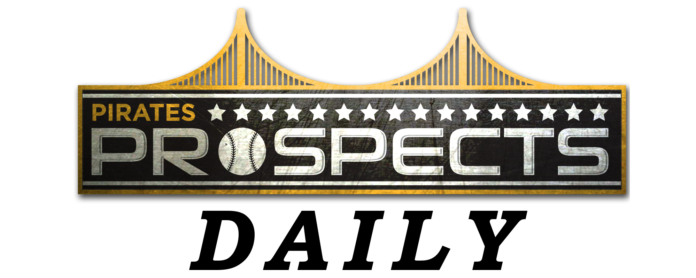
Obviously, Jones’ major league performance did not match the rest of his career. Let’s dive a bit deeper. First, the basic numbers from his last four seasons. I excluded his 84 plate appearances with the 2007 Twins, due to the small sample.
| Season | Team | PA | AVG | OBP | SLG | wOBA |
| 2006 | Twins (AAA) | 582 | 0.238 | 0.302 | 0.430 | 0.322 |
| 2007 | Twins (AAA) | 446 | 0.280 | 0.334 | 0.473 | 0.352 |
| 2008 | Twins (AAA) | 587 | 0.279 | 0.337 | 0.484 | 0.357 |
| 2009 | Pirates (AAA) | 299 | 0.307 | 0.348 | 0.502 | 0.371 |
| 2009 | Pirates | 358 | 0.293 | 0.372 | 0.567 | 0.396 |
| PA=Plate Appearances, AVG=Batting Average, OBP=On-Base Percentage, SLG=Slugging Percentage, wOBA=Weighted On-Base Average | ||||||
Clearly, Garrett’s time with the Pirates looks like an outlier, although he has seen gradual Triple-A improvement across the board. Time to dig deeper.
| Season | Team | BB% | K% | ISO | BABIP | xBABIP |
| 2006 | Twins (AAA) | 8.40% | 23.00% | .192 | ||
| 2007 | Twins (AAA) | 7.20% | 20.80% | .193 | ||
| 2008 | Twins (AAA) | 8.50% | 18.60% | .205 | ||
| 2009 | Pirates (AAA) | 6.00% | 17.00% | .195 | ||
| 2009 | Pirates | 11.20% | 24.20% | .274 | .323 | .326 |
| BB%=Walk Percentage, K%=Strikeout Percentage, ISO=Isolated Power | ||||||
Upon first glance, the major league walk rate seems out of whack. But it was probably just some regression to the mean after a low walk total the first half of the season in Triple-A. Overall, he walked in 8.83% of his plate appearances in 2009, which is consistent with his minor league numbers. The K% looks reasonable, as Jones gradually improved while gaining Triple-A experience. As expected, that strikeout rate rose when he reached the major league level. Jones’ 2009 BABIP and xBABIP are very close, so there are no issues there. However, he saw a huge jump in his Isolated Power upon reaching the show. After seeing some of the bombs Jones hit last year, I wouldn’t question his power. It appears to be elite to the naked eye. But that spike is still suspicious. Deeper we go.
| Season | Team | PA | HR | HR/PA | HR/FB | ||
| 2006 | Twins (AAA) | 582 | 21 | 3.61% | 13.55% | ||
| 2007 | Twins (AAA) | 446 | 13 | 2.91% | 10.08% | ||
| 2008 | Twins (AAA) | 587 | 23 | 3.92% | 14.29% | ||
| 2009 | Pirates (AAA) | 299 | 12 | 4.01% | 15.00% | ||
| 2009 | Pirates | 358 | 21 | 5.87% | 21.21% | ||
| PA=Plate Appearances, HR=Home Runs, HR/PA=Home Runs per Plate Appearance, HR/FB=Home Runs per Fly Ball | |||||||
It is clear that Garrett’s home run rates in Pittsburgh were much higher than his career norms. Strictly looking at his numbers, it appears that his major league power was a fluke. It is not unusual for a player to add strength at Jones’ age, but only a marginal amount. Garrett’s jump is far too dramatic. As I mentioned earlier, Jones hit 10 home runs in his first 19 games. Looking at the following splits, we see that his home run rates became more realistic as the season progressed and his blazing start drifted further away in the rearview mirror.
| Month | PA | HR | HR/PA | HR/FB |
| July | 108 | 10 | 9.26% | 28.6% |
| August | 120 | 6 | 5.00% | 21.4% |
| Sep/Oct | 130 | 5 | 3.85% | 13.9% |
So what should we expect from Jones in 2010? To find the answer, let’s see what he would have done in 2009 if his walk and home run rates were consistent with his minor league days. Here are his adjusted numbers. The adjusted BB%, HR/PA and HR/FB are Garrett’s Triple-A averages in 2006-2009.
| BB% | BB | HR/PA | HR | HR/FB | HR | ||
| 2009 | Actual | 11.20% | 40 | 5.87% | 21 | 21.21% | 21 |
| 2009 | Adjusted | 7.78% | 28 | 3.61% | 13 | 13.14% | 13 |
After the adjustments, we come up with 28 walks and 13 home runs. That leaves him with the following 2009 stats.
| Season | Team | PA | H | 1B | 2B | 3B | HR | BB | AVG | OBP | SLG |
| 2009 | Pirates (adjusted) | 358 | 92 | 49 | 21 | 1 | 13 | 28 | .293 | .338 | .465 |
A .293/.338/.465 line is above average, and it is pretty much in line with his CHONE projection (.270/.324/476). ZiPS, on the other hand, is a bit more optimistic (.285/.339/.494).
Garrett Jones had a dream season for the Pirates in 2009. For three months, he was one of the best hitters in baseball. Expecting him to repeat that performance is unrealistic. But he will still be a valuable hitter, providing a huge boost to a lineup full of question marks. Not bad for a minor league free agent signing.

